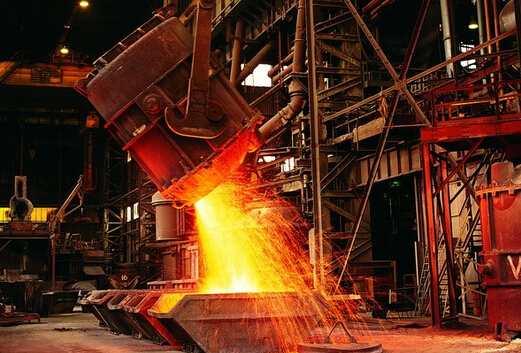
It can be seen from the discussion results that when the metal solidifies, the vibration will increase the undercooling of the alloy and the coarse sugar on the surface of the solidified crystal. Therefore, these characteristics of vibration solidification metal are conducive to metal nucleation and increase the nucleation rate inside the metal.
Vibration lost foam casting can obtain higher undercooling than lost foam casting without vibration. From the point of view of solidification and nucleation, vibration is a favorable factor for the solidification of cast iron. However, only sufficient undercooling can not change the graphite morphology of cast iron alloy. It is necessary to add certain inoculants, vermicularizers or spheroidizers to the metal melt under certain conditions (referring to certain superheat, appropriate chemical composition, appropriate addition method, etc.) before casting cast iron, The morphology of graphite can be changed only by adding auxiliary metal and appropriate vibration parameters.
For vermicular graphite cast iron, the graphite morphology includes vermicular graphite and spheroidal graphite. Vermicular graphite is formed in eutectic solidification stage and belongs to eutectic graphite. The researchers believe that the core material constituting graphite of vermicular graphite cast iron is not essentially different from that of gray cast iron, but the compounds in vermicular graphite cast iron are complex and diverse, because there are more alloy elements in the Vermicular Agent, such as Mg, CE, CA, etc. The graphite core number (i.e. eutectic group number) of vermicular cast iron is slightly higher than that of gray cast iron, but far less than that of nodular cast iron, which is about 1/10 of that of nodular cast iron. For nodular cast iron or gray cast iron, strengthening inoculation will increase the number of graphite cores. But in vermicular graphite cast iron, the number of vermicular graphite decreases correspondingly, while the number of graphite spheres increases obviously. Therefore, in order to obtain high creep rate, the content of inoculant added in vermicular graphite cast iron should not be too much. For a certain thickness of vermicular graphite cast iron, there is an optimal core number, too low is prone to cementite, too high will lead to the reduction of vermicular rate.
If the metal melt is poured without any treatment after melting, the undercooling s, O, and other element contents of the metal melt can not meet the conditions for the formation of vermicular graphite. According to the theory of solidification growth and interfacial tension, the interfacial tension between graphite and liquid metal is higher than that of other parts. At this time, graphite grows into spherical graphite. However, due to the anisotropy of graphite, the interfacial tension between different crystal planes of graphite and metal melt is different. S and o are surface active elements, which are easy to adsorb on the edge surface, reducing the interface energy, contact angle and the binding force between graphite and the edge surface, resulting in the formation of flake graphite. When the vermiculating agent or spheroidizing agent is added to the metal melt, the number of graphite particles in the metal melt increases.
In addition, due to the strong binding force between vermicular elements and surface active elements o and s, it can generate stable sulfides and oxides, inhibit the adsorption of O and s on the graphite edge, increase the interfacial energy and interfacial tension between the graphite edge and the metal melt, and the graphite will generate vermicular graphite.
Because the solidification undercooling of the alloy increases during the vibration lost foam casting process, that is, the thermodynamic undercooling increases, which is conducive to the nucleation of the metal. According to the theoretical analysis, the increase of undercooling is conducive to the acquisition of spherical graphite. However, vibration increases the solidification temperature range of the metal, promotes the homogenization of the composition of the metal melt, prolongs the residence time of the vermicularizing agent or spheroidizing agent in the liquid or solid-liquid mixed metal liquid, and makes the spheroidizing agent or vermicularizing agent decline seriously. From this point of view, vibration is an unfavorable factor for the preparation of nodular cast iron and vermicular cast iron.
Therefore, the transformation of graphite morphology of cast iron alloy is the result of the synergistic action of multiple factors. In order to obtain the ideal graphite type, it is necessary to adjust and control various process parameters in the production process, including vibration frequency, amplitude, molten iron treatment temperature, alloy type and addition amount of spheroidizing agent and vermicularizing agent, so as to change the graphite morphology and distribution of cast iron alloy with the help of vibration, So as to achieve the purpose of preparing different cast iron alloys.
